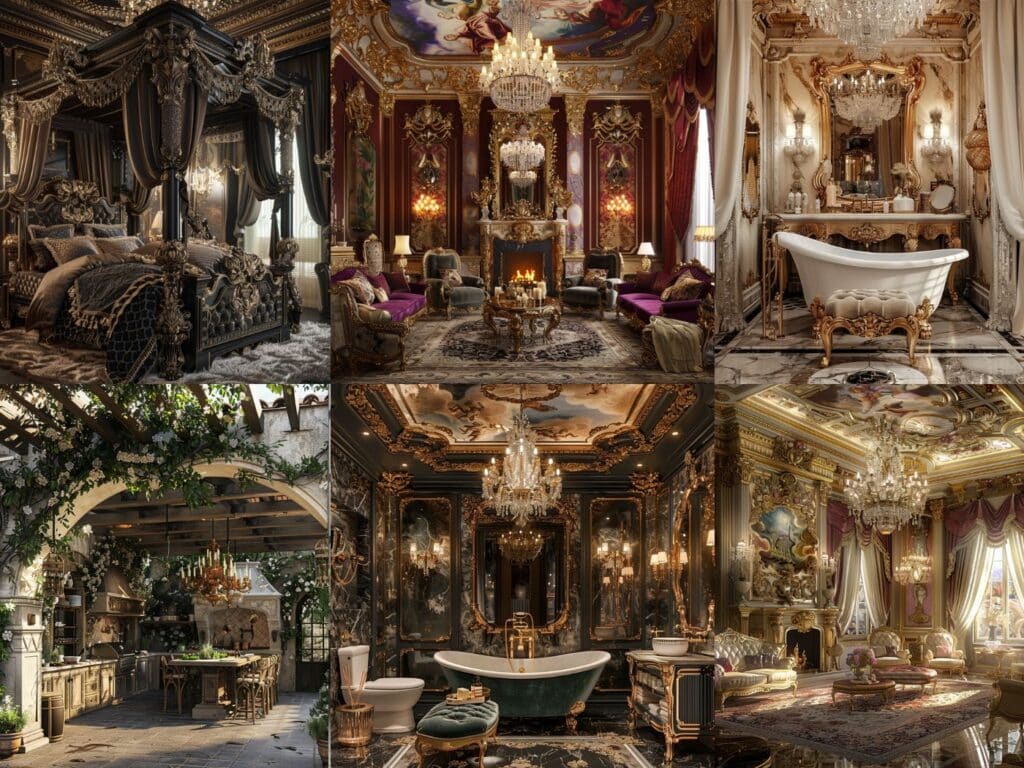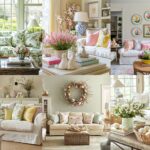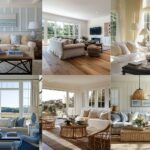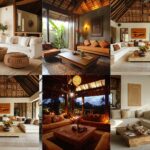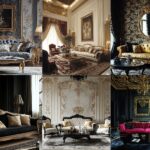Are you looking to transform your living space into a grand, opulent haven? Baroque interior design may well be just what you need. Originating in 17th-century Europe, this style is renowned for its intricate details, luxurious materials, and dramatic flair.
Imagine walking into a room adorned with ornate moldings, lavish fabrics, and majestic chandeliers. The Baroque style isn’t just about decoration; it’s about creating an atmosphere of splendor and sophistication. Whether you’re redesigning a single room or your entire home, embracing Baroque elements can elevate your space to new heights of elegance.
Top 13 Baroque Interior Design Ideas And Styles
#1. Baroque Outdoor Kitchen
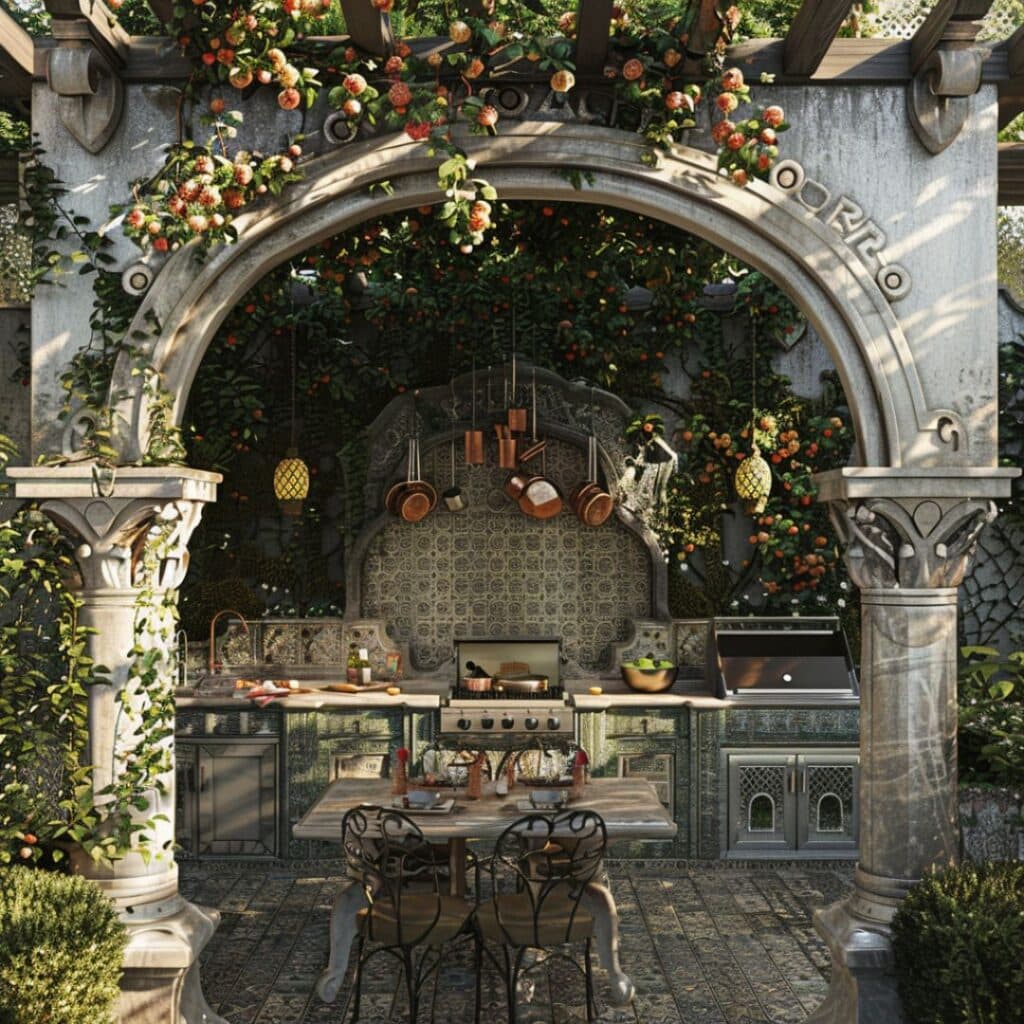
#2. Baroque Outdoor Kitchen Idea
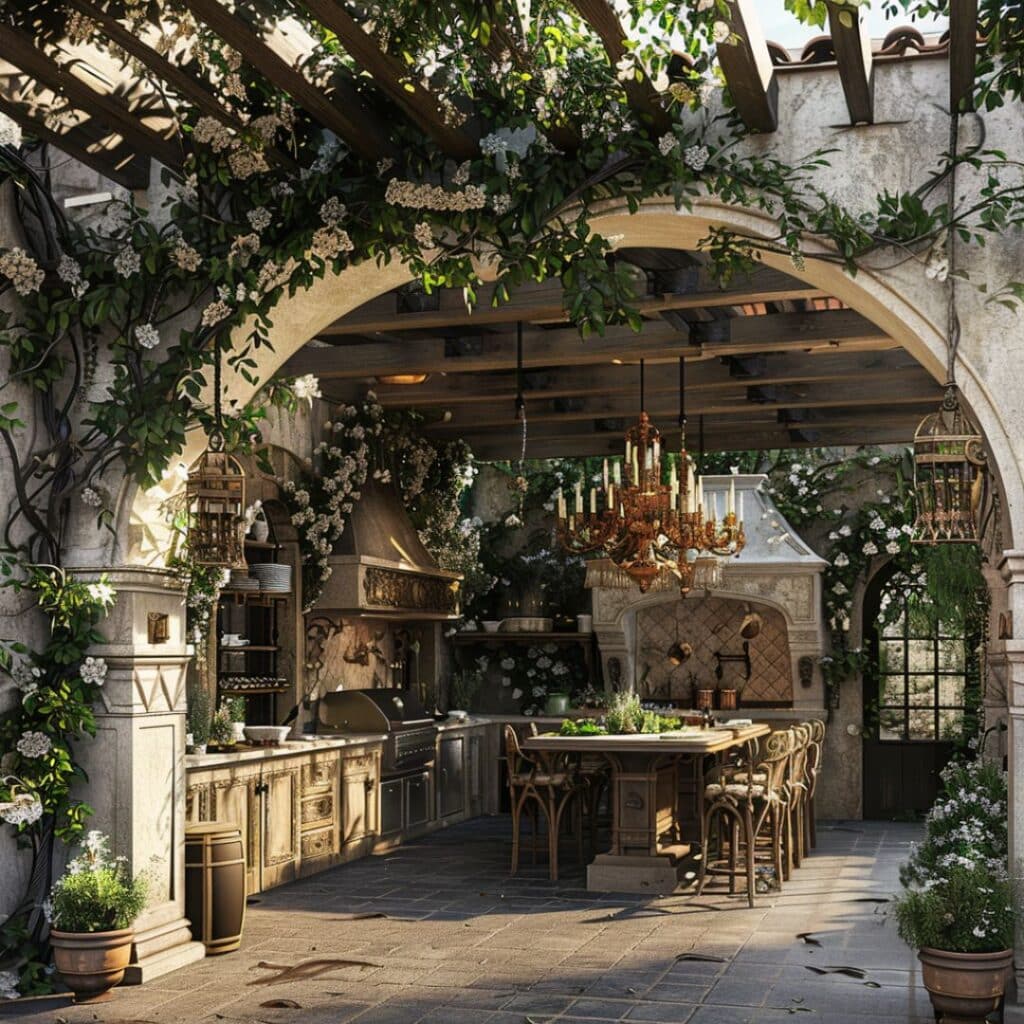
#3. Baroque Outdoor Kitchen Design
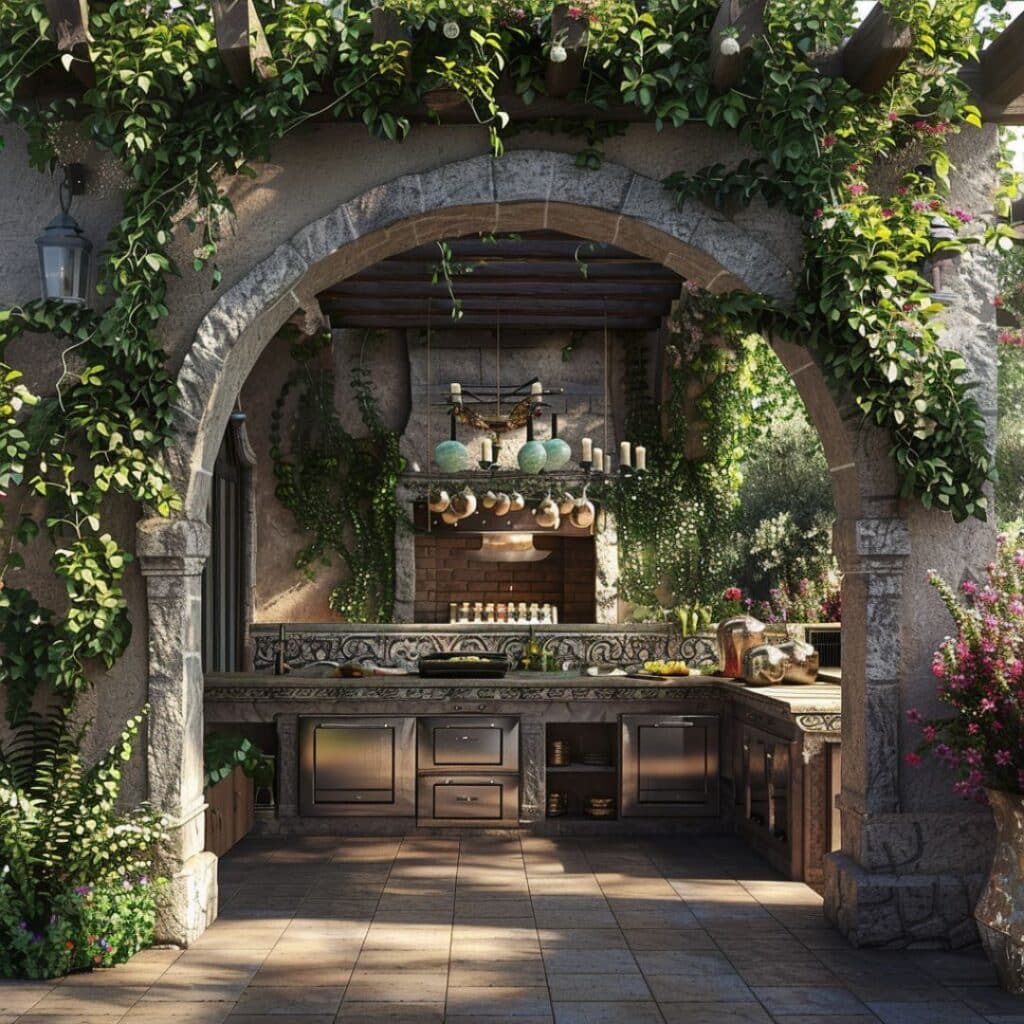
#4. Baroque Outdoor Kitchen Decor

#5. Baroque Living Room Interior Idea
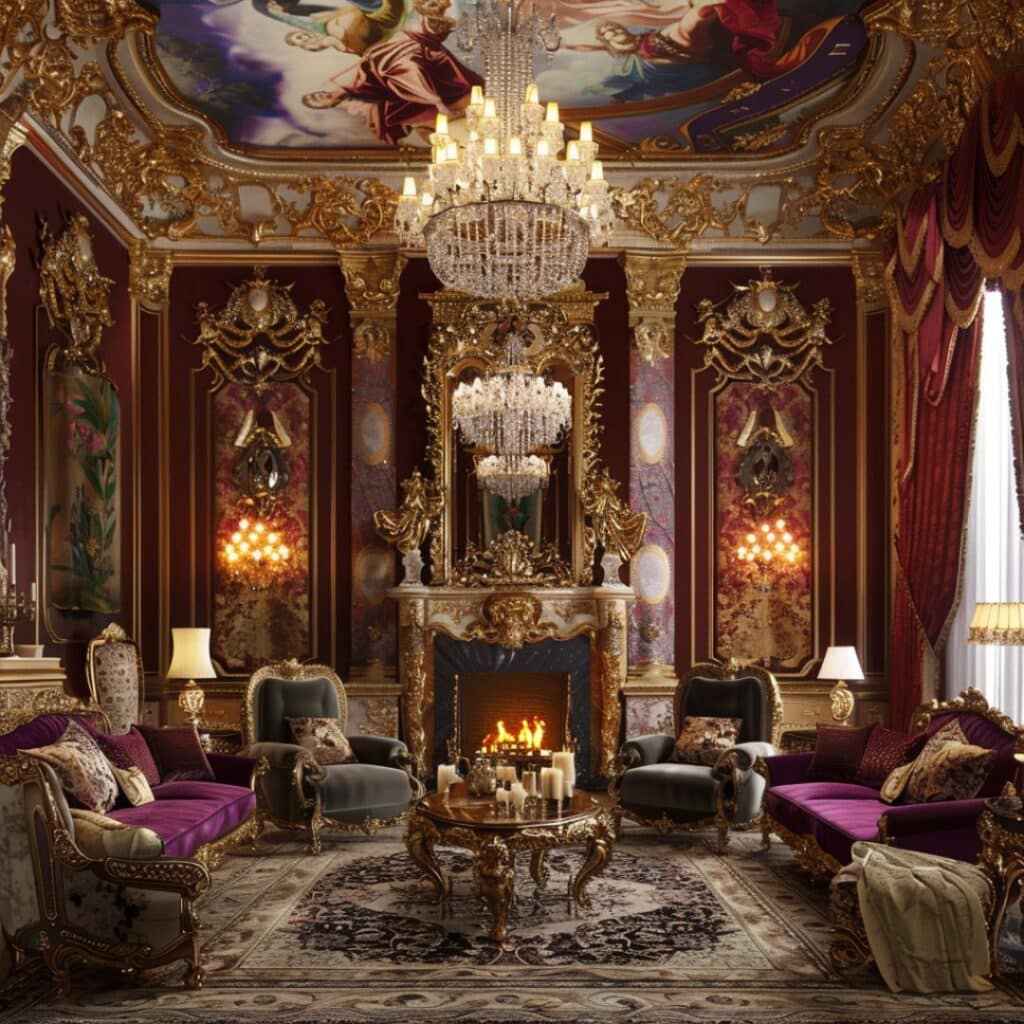
#6. Baroque Living Room Interior Design
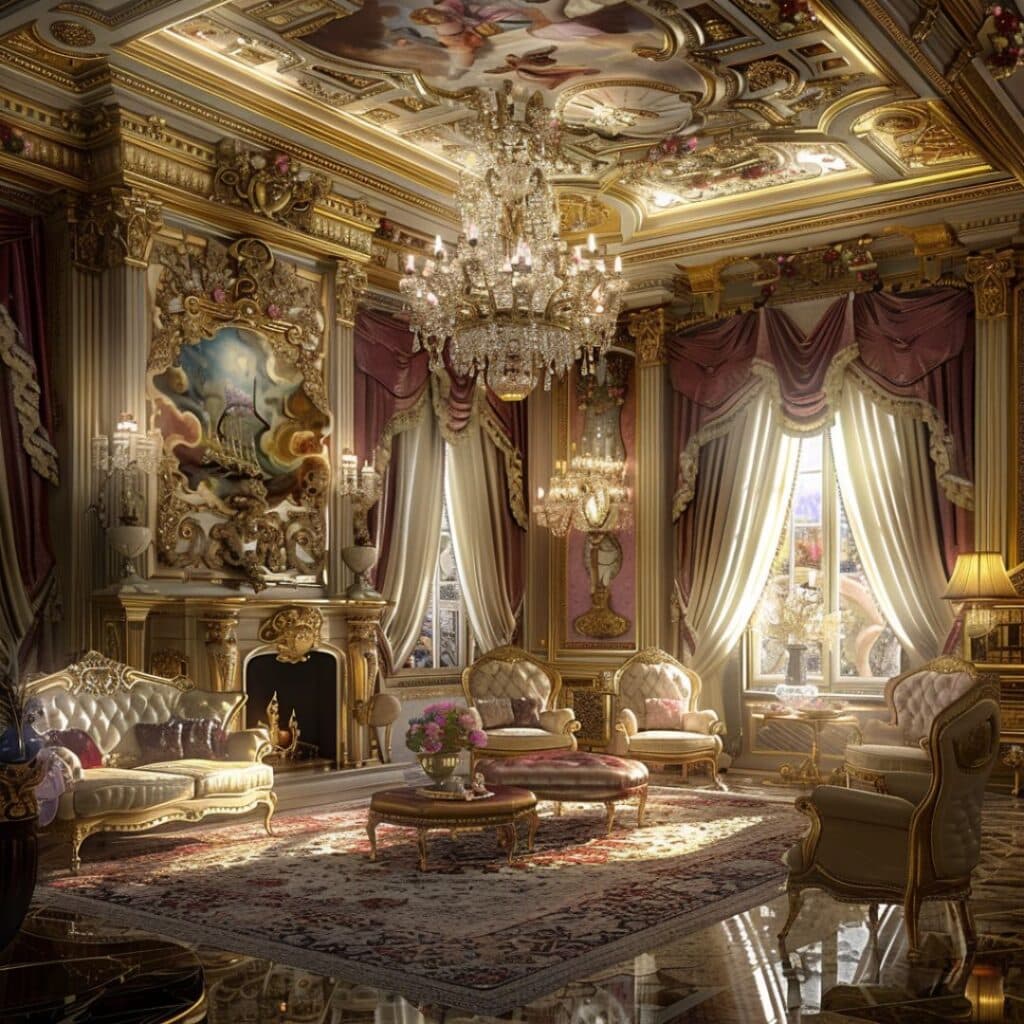
#7. Baroque Living Room Idea
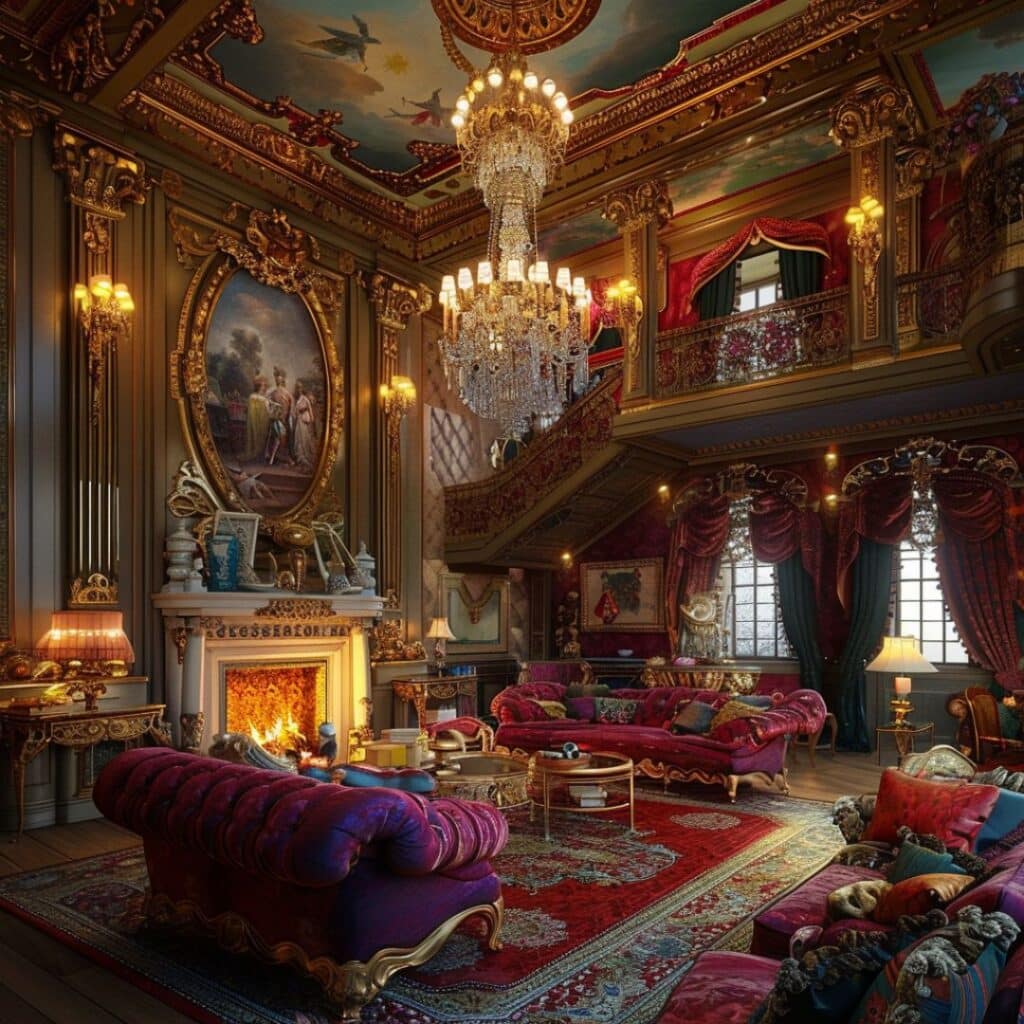
#8. Baroque Bedroom Interior Idea

#9. Baroque Bedroom Interior Design
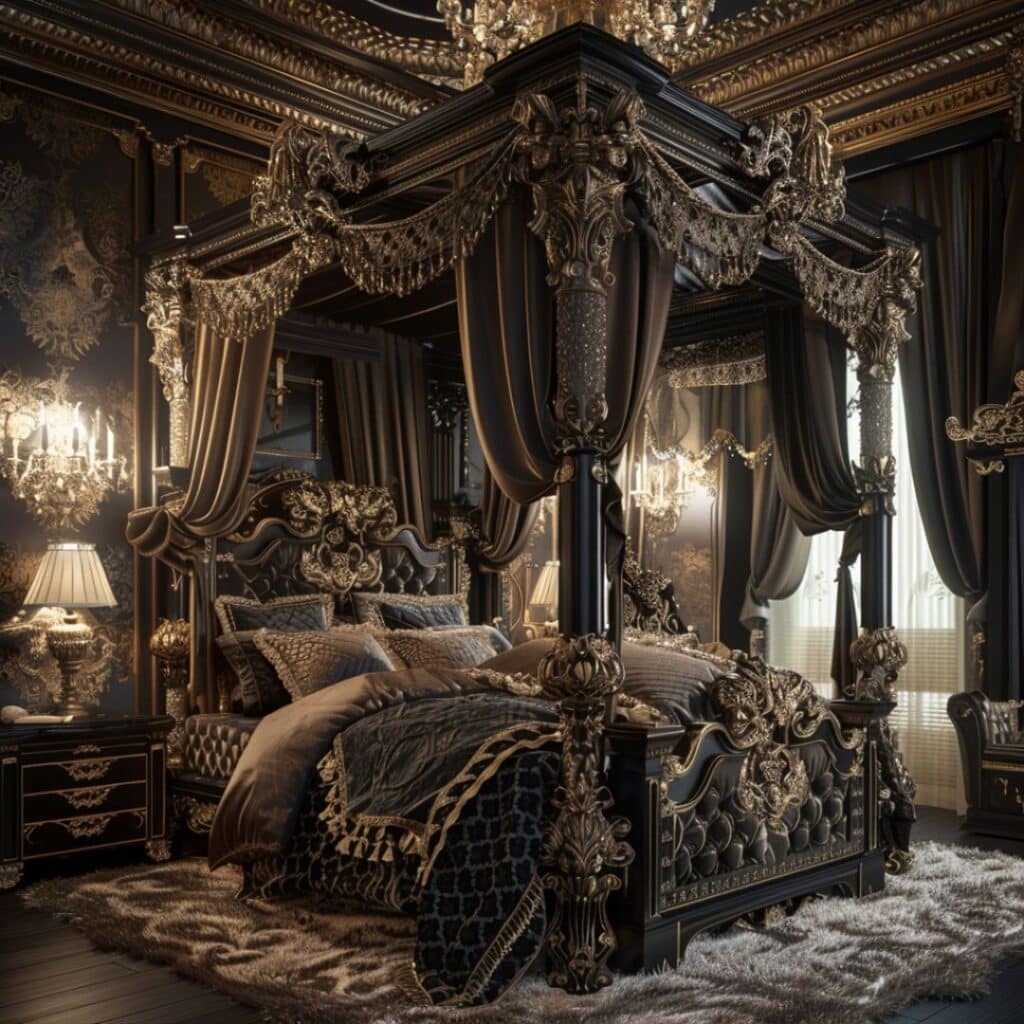
#10. Baroque Bedroom Idea
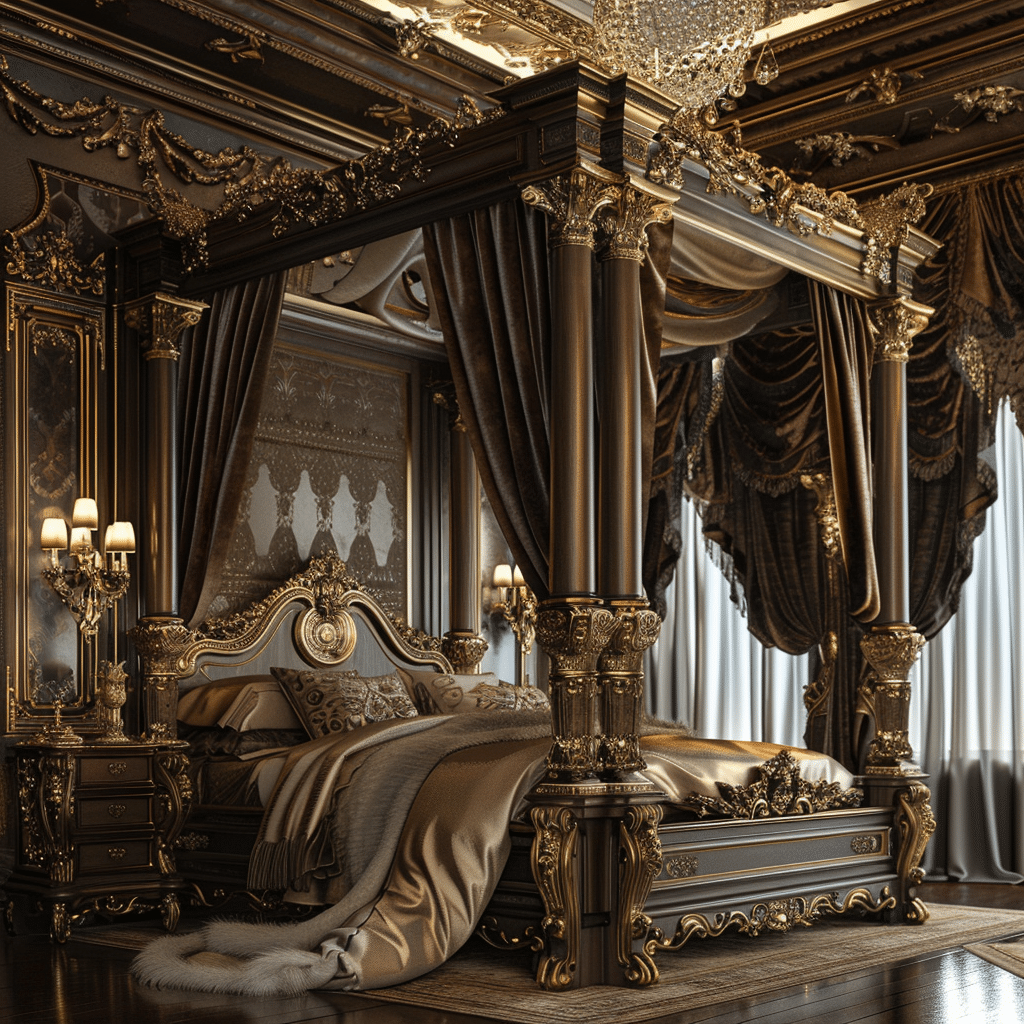
#11. Baroque Bedroom Design
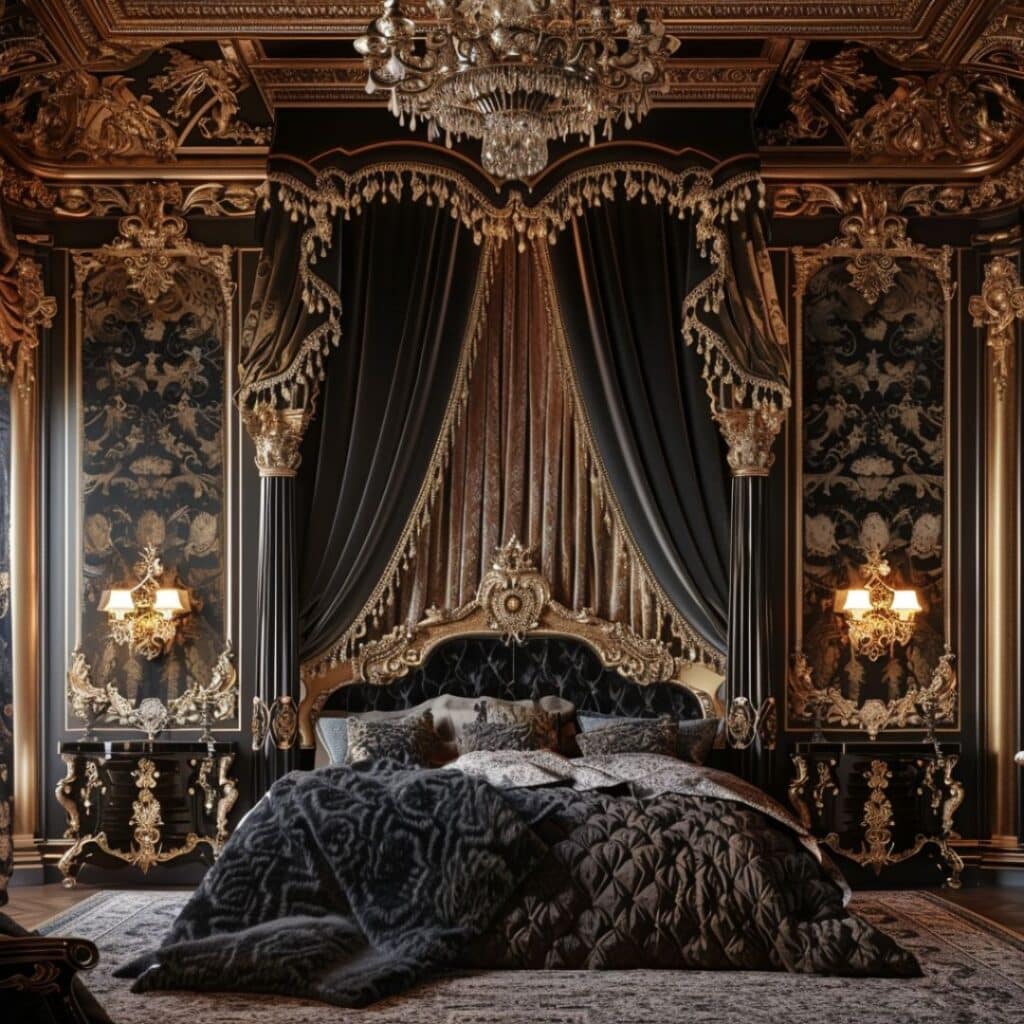
#12. Baroque Bathroom Interior Idea

#13. Baroque Bathroom Interior Design
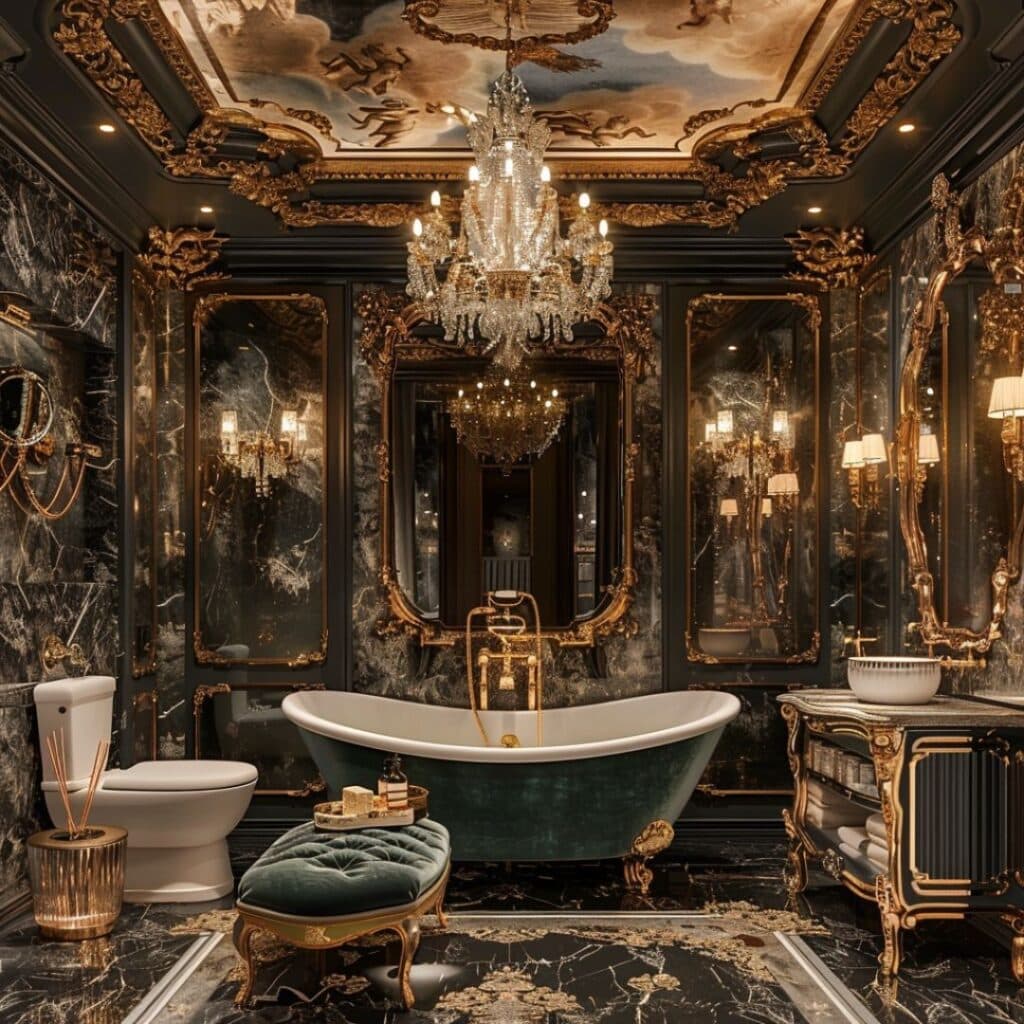
Overview of Baroque Interior Design
Baroque interior design stands out with its elaborate details and grandeur. Originating in 17th-century Europe, it brings a sense of opulence to any space. You can expect rich fabrics, bold colors, and intricate moldings.
Lavish materials like marble and gold leaf are commonly used. Majestic chandeliers often serve as focal points in rooms. Furniture pieces typically feature ornate carvings and luxurious upholstery. Interestingly, these elements also play a significant role in Victorian interior design, which similarly emphasizes opulence and intricate detailing.
This style emphasizes drama and sophistication. Heavy draperies, large mirrors, and frescoed ceilings contribute to the overall aesthetic. Embracing these elements transforms your home into a lavish retreat.
Key Features of Baroque Design
Baroque interior design embodies opulence and grandeur. This section explores the primary attributes that define this luxurious style.
Opulent Detailing
Baroque interiors showcase intricate details, epitomizing luxury. Ornate carvings embellish furniture, adding depth and elegance. Gilded accents like gold leaf further enhance these pieces.
Rich Color Palettes
Deep, bold colors dominate Baroque spaces. Shades such as crimson, emerald green, and royal blue are common. These hues create a dramatic yet sophisticated ambiance. Interestingly, these rich color palettes can also be found in Dark Academia interior design, which uses deep, moody tones to create a scholarly and nostalgic atmosphere.
Integrating these key features allows you to transform any space into a lavish retreat reminiscent of 17th-century European splendor.
Influential Baroque Architects and Designers
Gian Lorenzo Bernini and Francesco Borromini played pivotal roles in shaping Baroque interior design. Their works reflect the grandeur and intricate detailing characteristic of this style.
Gian Lorenzo Bernini
Bernini, a master sculptor and architect, significantly influenced Baroque design. His work on St. Peter’s Basilica showcases his ability to blend art with architecture seamlessly. The Baldachin, an elaborate bronze canopy over St. Peter’s tomb, exemplifies his flair for drama and opulence. Additionally, Bernini designed the Cornaro Chapel in Rome’s Santa Maria della Vittoria Church, featuring the famous “Ecstasy of Saint Teresa” sculpture.
Francesco Borromini
Borromini’s innovative approach set him apart from his contemporaries. He used unconventional shapes and dynamic spaces to create unique interiors that defied traditional architectural norms.
San Carlo alle Quattro Fontane in Rome remains one of his most notable contributions, with its undulating walls and complex geometrical forms showcasing his genius. Another significant project was Sant’Ivo alla Sapienza, where he employed concave facades and spiral motifs to achieve a sense of movement within static structures.
These architects’ works inspire modern interpretations of Baroque interior design principles through their dedication to grandeur and intricate detailing.
Transforming Modern Spaces With Baroque Elements
Baroque interior design can bring a touch of grandeur to contemporary settings. Integrating these elements into modern spaces creates a captivating fusion of old and new.
Incorporating Baroque Furniture
Select furniture with elaborate carvings and opulent fabrics. Opt for pieces like velvet-upholstered sofas, gilt mirrors, and intricately designed tables. These items add sophistication to any room. Interestingly, similar opulent detailing can be found in Neo-Gothic interior design, emphasizing intricate carvings and luxurious materials to create a dramatic and historical ambiance.
Lighting and Accessories
Use chandeliers as focal points in living areas or dining rooms. Candlesticks, sconces, and ornate lamps enhance the luxurious ambiance. Mirrors with gilded frames amplify light while adding depth to spaces.
By thoughtfully integrating these components, you can transform your home into a modern space imbued with the elegance of Baroque design.

